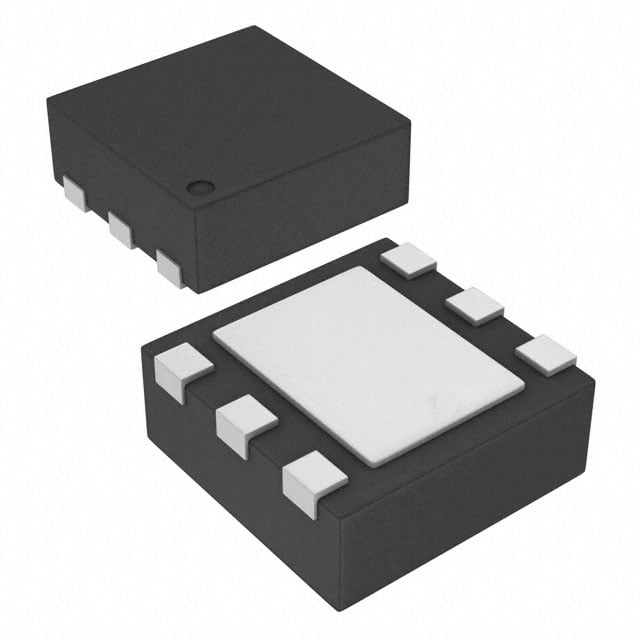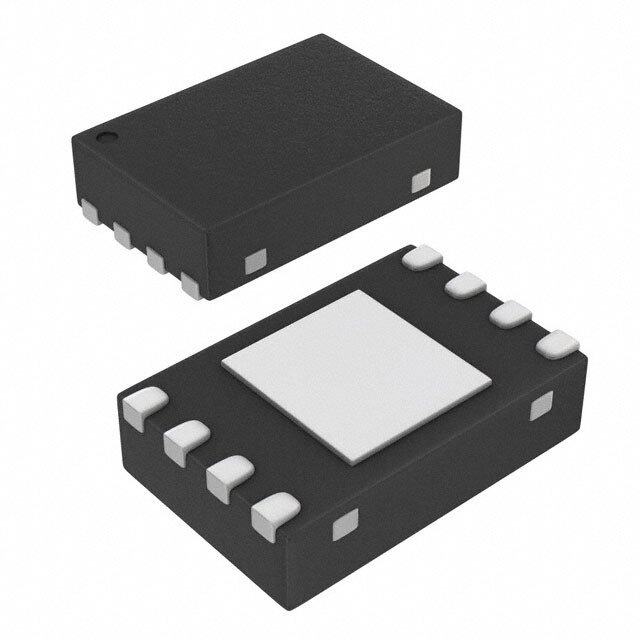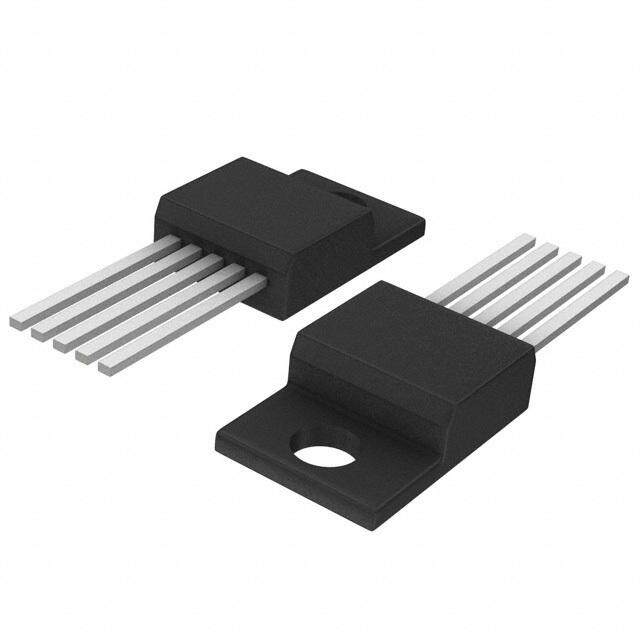ICGOO在线商城 > 集成电路(IC) > PMIC - 稳压器 - DC DC 开关稳压器 > TPS61261DRVT
- 型号: TPS61261DRVT
- 制造商: Texas Instruments
- 库位|库存: xxxx|xxxx
- 要求:
| 数量阶梯 | 香港交货 | 国内含税 |
| +xxxx | $xxxx | ¥xxxx |
查看当月历史价格
查看今年历史价格
TPS61261DRVT产品简介:
ICGOO电子元器件商城为您提供TPS61261DRVT由Texas Instruments设计生产,在icgoo商城现货销售,并且可以通过原厂、代理商等渠道进行代购。 TPS61261DRVT价格参考¥4.93-¥11.16。Texas InstrumentsTPS61261DRVT封装/规格:PMIC - 稳压器 - DC DC 开关稳压器, 固定 升压 开关稳压器 IC 正 3.3V 1 输出 100mA 6-WDFN 裸露焊盘。您可以下载TPS61261DRVT参考资料、Datasheet数据手册功能说明书,资料中有TPS61261DRVT 详细功能的应用电路图电压和使用方法及教程。
TPS61261DRVT是德州仪器(Texas Instruments)生产的PMIC(电源管理集成电路),具体分类为DC-DC开关稳压器。这款器件适用于多种应用场景,尤其在便携式电子设备和低功耗系统中表现出色。 主要应用场景: 1. 便携式电子产品: TPS61261DRVT广泛应用于手机、平板电脑、可穿戴设备等便携式电子产品中。它能够高效地将电池电压转换为所需的稳定输出电压,确保设备在不同工作状态下的稳定供电。其高效率和小尺寸特性使其非常适合这些对空间和功耗要求苛刻的应用。 2. 物联网(IoT)设备: 在物联网设备中,TPS61261DRVT可以为传感器节点、无线模块等提供稳定的电源。其低静态电流和高效能转换特性有助于延长电池寿命,这对于远程监控、智能家居等应用至关重要。 3. 工业自动化: 在工业环境中,TPS61261DRVT可用于为各种传感器、控制器和其他低功耗设备供电。其宽输入电压范围和强大的负载能力使其能够在复杂的工业环境中保持稳定运行。 4. 医疗设备: 对于便携式医疗设备如血糖仪、心率监测器等,TPS61261DRVT的高效能和可靠性至关重要。它不仅能够确保设备的长时间稳定工作,还能减少发热,提高用户体验。 5. 消费类电子产品: 在诸如蓝牙耳机、智能手表等消费类电子产品中,TPS61261DRVT提供了高效的电源管理解决方案,确保设备在小体积和低功耗的前提下实现高性能。 特点与优势: - 高效能转换:高达90%以上的转换效率,减少能量损失。 - 低静态电流:典型值仅为7µA,适合电池供电设备。 - 宽输入电压范围:支持1.8V到6.5V的输入电压范围,适应多种电源类型。 - 小封装尺寸:采用小型DFN封装,节省PCB空间。 - 集成保护功能:内置过流保护、短路保护和热关断功能,确保系统的安全性和可靠性。 综上所述,TPS61261DRVT凭借其高效能、低功耗和紧凑的设计,在众多便携式和低功耗应用中具有广泛的应用前景。
| 参数 | 数值 |
| 产品目录 | 集成电路 (IC)半导体 |
| 描述 | IC REG BOOST SYNC 3.3V 0.7A 6SON稳压器—开关式稳压器 Tiny Low Inp Vltg Boost Converter |
| DevelopmentKit | TPS61261EVM-208 |
| 产品分类 | |
| 品牌 | Texas Instruments |
| 产品手册 | http://www.ti.com/litv/slvsa99a |
| 产品图片 |
|
| rohs | 符合RoHS无铅 / 符合限制有害物质指令(RoHS)规范要求 |
| 产品系列 | 电源管理 IC,稳压器—开关式稳压器,Texas Instruments TPS61261DRVT- |
| 数据手册 | |
| 产品型号 | TPS61261DRVT |
| PWM类型 | 电流模式 |
| 产品种类 | 稳压器—开关式稳压器 |
| 供应商器件封装 | 6-SON(2x2) |
| 包装 | 带卷 (TR) |
| 同步整流器 | 是 |
| 商标 | Texas Instruments |
| 安装类型 | 表面贴装 |
| 安装风格 | SMD/SMT |
| 封装 | Reel |
| 封装/外壳 | 6-WDFN 裸露焊盘 |
| 封装/箱体 | WSON-6 |
| 工作温度 | -40°C ~ 85°C |
| 工作温度范围 | - 40 C to + 85 C |
| 工厂包装数量 | 250 |
| 开关频率 | 2.5 MHz |
| 拓扑结构 | Boost |
| 最大工作温度 | + 85 C |
| 最大输入电压 | 4 V |
| 最小工作温度 | - 40 C |
| 最小输入电压 | 0.8 V |
| 标准包装 | 250 |
| 电压-输入 | 0.8 V ~ 4 V |
| 电压-输出 | 3.3V |
| 电流-输出 | 700mA |
| 类型 | Voltage Converter |
| 系列 | TPS61261 |
| 输出数 | 1 |
| 输出电压 | 1.8 V to 4 V |
| 输出电流 | 10 mA to 100 mA |
| 输出端数量 | 1 Output |
| 输出类型 | 固定 |
| 频率-开关 | 2.5MHz |

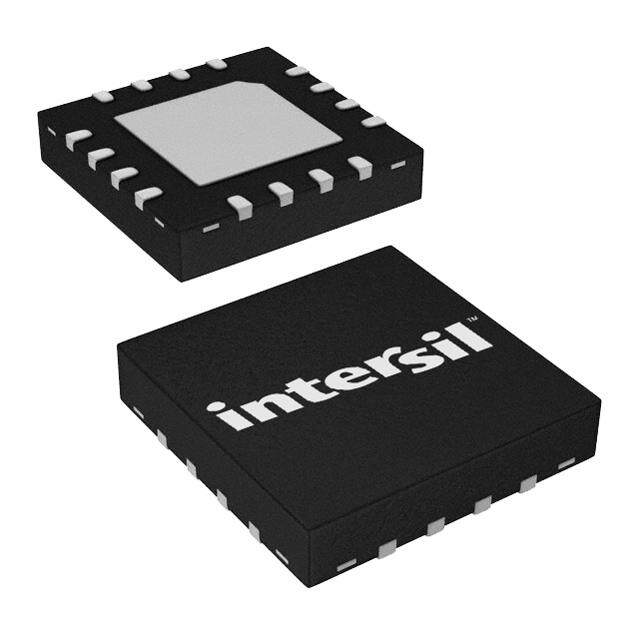
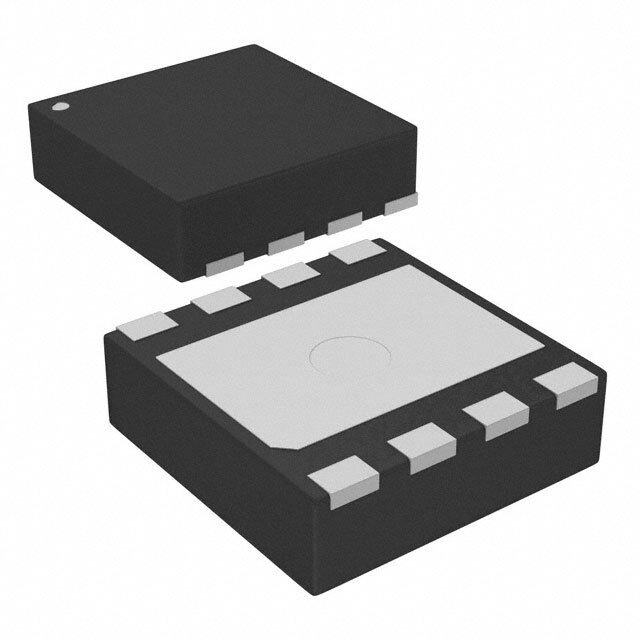

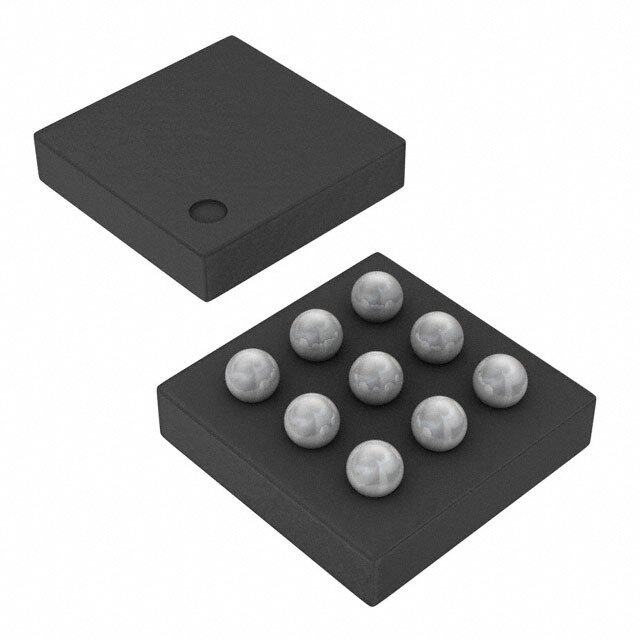
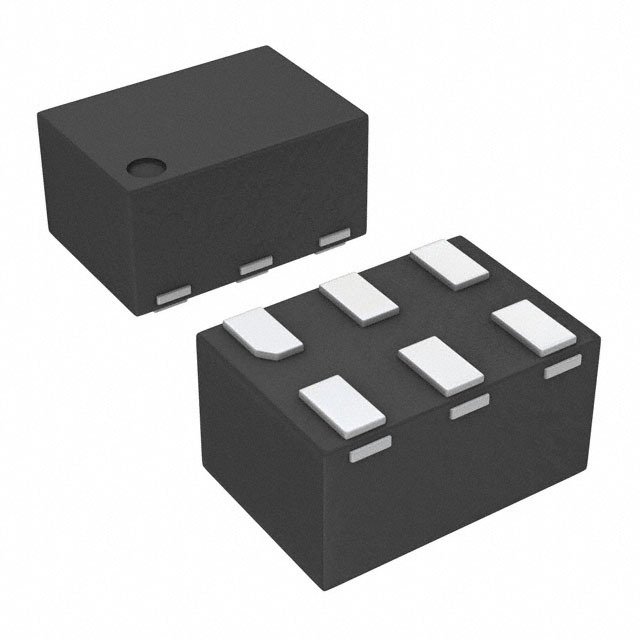

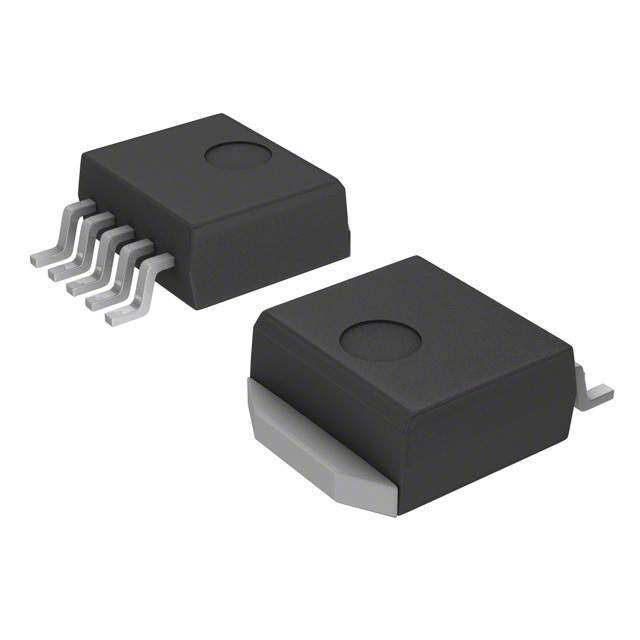

- 商务部:美国ITC正式对集成电路等产品启动337调查
- 曝三星4nm工艺存在良率问题 高通将骁龙8 Gen1或转产台积电
- 太阳诱电将投资9.5亿元在常州建新厂生产MLCC 预计2023年完工
- 英特尔发布欧洲新工厂建设计划 深化IDM 2.0 战略
- 台积电先进制程称霸业界 有大客户加持明年业绩稳了
- 达到5530亿美元!SIA预计今年全球半导体销售额将创下新高
- 英特尔拟将自动驾驶子公司Mobileye上市 估值或超500亿美元
- 三星加码芯片和SET,合并消费电子和移动部门,撤换高东真等 CEO
- 三星电子宣布重大人事变动 还合并消费电子和移动部门
- 海关总署:前11个月进口集成电路产品价值2.52万亿元 增长14.8%
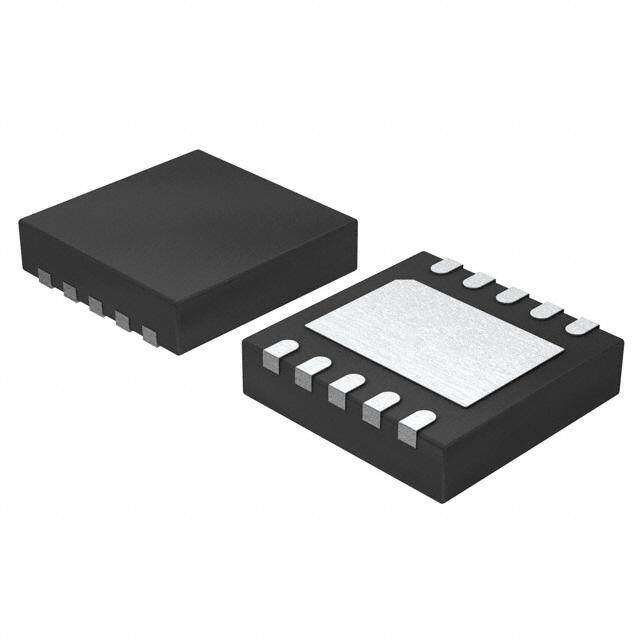


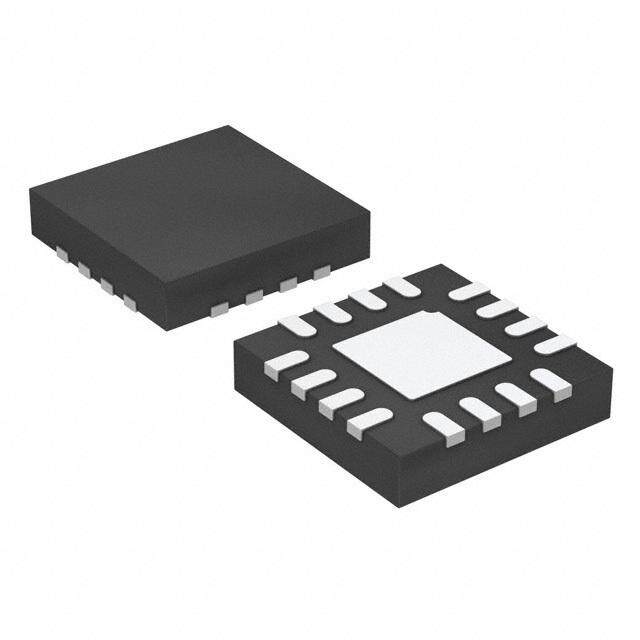

PDF Datasheet 数据手册内容提取
Product Order Technical Tools & Support & Folder Now Documents Software Community TPS61260,TPS61261 SLVSA99C–MAY2011–REVISEDAPRIL2018 TPS6126x 0.8-V Input Synchronous Boost Converters with 100-mA Output Current 1 Features 3 Description • InputVoltageRangefrom0.8Vto4.0V The TPS6126x devices provide a power supply 1 solution for products powered by either single or dual • Upto95%Efficiency cell alkaline, NiCd, or NiMH batteries. Its unique • 100mAOutputCurrentat3.3Vout(VIN >1V) advanced softstart makes it also suitable for products • FixedandAdjustableOutputVoltageOptionsfrom powered by high output impedance battery types, like 1.8Vto4.0V coin cells. Output currents can go as high as 100 mA while using a single cell alkaline battery, and • ProgrammableAverageOutputCurrentfrom10 dischargeitdownto0.8Vorlower. mAto100mA The boost converter is based on a quasi fixed • AdjustableOutputCurrentLimitforSmallest frequency, pulse-width-modulation (PWM) controller Inductor using synchronous rectification to obtain maximum • PowerSaveModeforImprovedEfficiencyatLow efficiency. At low load currents, the converter enters OutputPower Power Save Mode to ensure high efficiency over a • 29-µAQuiescentCurrent wide load current range. The maximum average current in the switches is limited to a programmable • AdvancedSoftstart value which can go as high as 700 mA. The output • QuasiFixedFrequencyOperationat2.5MHz voltage is programmable using an external resistor • OutputOvervoltageProtection divider, or is fixed internally on the chip. In addition, the average output current can be programmed as • LoadDisconnectDuringShutdown well. The converter then regulates the programmed • UndervoltageLockout output voltage or the programmed output current, • Availableina2.00× 2.00mm,6-PinWSON which ever demands lower output power. The Package converter can be disabled to minimize battery drain. During shutdown, the load is disconnected from the 2 Applications battery. The device is packaged in a 6-pin WSON (DRV)package. • AllSingleorDualCellAlkaline,NiCdorNiMH BatteryPoweredProducts DeviceInformation(1) • HighOutputImpedanceBattery(CoinCells) PARTNUMBER PACKAGE BODYSIZE(NOM) PoweredProducts TPS61260 • PersonalMedicalProducts WSON(6) 2.00mm×2.00mm TPS61261 • LEDDriver (1) For all available packages, see the orderable addendum at • LaserPointer theendofthedatasheet. • WirelessHeadsets • IndustrialMeteringEquipment L1 L VOUT V OUT 4.7µH C2 R1 10µF VIN VIN FB 0.8 V to 4.0 V R2 C1 EN 10µF GND RI R3 TPS61260 1 An IMPORTANT NOTICE at the end of this data sheet addresses availability, warranty, changes, use in safety-critical applications, intellectualpropertymattersandotherimportantdisclaimers.PRODUCTIONDATA.
TPS61260,TPS61261 SLVSA99C–MAY2011–REVISEDAPRIL2018 www.ti.com Table of Contents 1 Features.................................................................. 1 8.4 DeviceFunctionalModes........................................12 2 Applications........................................................... 1 8.5 Programming..........................................................13 3 Description............................................................. 1 9 ApplicationandImplementation........................ 14 4 RevisionHistory..................................................... 2 9.1 ApplicationInformation............................................14 9.2 TypicalApplications................................................14 5 PinConfigurationandFunctions......................... 3 10 PowerSupplyRecommendations..................... 17 6 Specifications......................................................... 4 11 Layout................................................................... 17 6.1 AbsoluteMaximumRatings......................................4 6.2 HandlingRatings......................................................4 11.1 LayoutGuidelines.................................................17 6.3 RecommendedOperatingConditions.......................4 11.2 LayoutExample....................................................18 6.4 ThermalInformation..................................................4 11.3 ThermalConsiderations........................................18 6.5 ElectricalCharacteristics...........................................5 12 DeviceandDocumentationSupport................. 19 6.6 TypicalCharacteristics..............................................6 12.1 DeviceSupport ....................................................19 7 ParameterMeasurementInformation..................8 12.2 DocumentationSupport .......................................19 7.1 SchematicandListofComponents..........................8 12.3 RelatedLinks........................................................19 12.4 Trademarks...........................................................19 8 DetailedDescription............................................ 10 12.5 ElectrostaticDischargeCaution............................19 8.1 Overview.................................................................10 12.6 Glossary................................................................19 8.2 FunctionalBlockDiagrams.....................................10 13 Mechanical,Packaging,andOrderable 8.3 FeatureDescription.................................................11 Information........................................................... 19 4 Revision History NOTE:Pagenumbersforpreviousrevisionsmaydifferfrompagenumbersinthecurrentversion. ChangesfromRevisionB(November2014)toRevisionC Page • Changedtermfromµsto(µH)inEquation3. ..................................................................................................................... 14 ChangesfromRevisionA(February2013)toRevisionB Page • AddedHandlingRatingtable,FeatureDescriptionsection,DeviceFunctionalModes,Applicationand Implementationsection,PowerSupplyRecommendationssection,Layoutsection,DeviceandDocumentation Supportsection,andMechanical,Packaging,andOrderableInformationsection................................................................ 1 • ChangedMinimuminputvoltageforstartup,-40°C<T <105°C,Maxfrom0.8Vto1.2V................................................. 5 J • AddedV =0V,V =1.2V,T =25°CTestConditionandvaluestoShutdowncurrent................................................... 5 EN IN A ChangesfromOriginal(May2011)toRevisionA Page • ChangedSupplyvoltagetoInputsupplyinRECOMMENDEDOPERATINGCONDITIONS................................................ 4 • ChangedELECTRICALCHARACTERISTICS....................................................................................................................... 5 • ChangedSynchronousBoostOperationsection.................................................................................................................. 11 • DeletedDynamicCurrentLimitsection................................................................................................................................ 12 • ChangedInductorSelectionsection..................................................................................................................................... 14 • ChangedCapacitorSelectionsection.................................................................................................................................. 15 • ChangedPowerPAD™toExposedThermalPad................................................................................................................ 18 2 SubmitDocumentationFeedback Copyright©2011–2018,TexasInstrumentsIncorporated ProductFolderLinks:TPS61260 TPS61261
TPS61260,TPS61261 www.ti.com SLVSA99C–MAY2011–REVISEDAPRIL2018 5 Pin Configuration and Functions 6-PinWSON DRVPackage (TopView) GND RI 1 6 VIN Exposed EN 2 Thermal 5 L Pad FB 3 GND 4 VOUT PinFunctions PIN I/O DESCRIPTION NAME NUMBER EN 2 I Enableinput.(High=enabled,Low=disabled).Donotleavefloating. FB 3 I Voltagefeedbackofadjustableversions.MustbeconnectedtoVOUTonfixedoutputvoltage versions. GND Exposed Mustbesolderedtoachieveappropriatepowerdissipationandmechanicalreliability.Mustbe ThermalPad connectedtoGND. L 5 I Connectionforinductor RI 1 I Averageoutputcurrentprogramminginput.Aresistorwithavaluebetween2kΩand20kΩmustbe connectedbetweentheRIpinandGND. VIN 6 I Supplyvoltageforcontrolstage VOUT 4 O Boostconverteroutput Copyright©2011–2018,TexasInstrumentsIncorporated SubmitDocumentationFeedback 3 ProductFolderLinks:TPS61260 TPS61261
TPS61260,TPS61261 SLVSA99C–MAY2011–REVISEDAPRIL2018 www.ti.com 6 Specifications 6.1 Absolute Maximum Ratings overoperatingfree-airtemperaturerange(unlessotherwisenoted) (1) MIN MAX UNIT VIN,L,VOUT,EN,FB –0.3 5.0 V Voltagerange(2) RI –0.3 3.6 V Operatingjunctiontemperaturerange,T –40 150 °C J (1) StressesbeyondthoselistedunderAbsoluteMaximumRatingsmaycausepermanentdamagetothedevice.Thesearestressratings only,whichdonotimplyfunctionaloperationofthedeviceattheseoranyotherconditionsbeyondthoseindicatedunderRecommended OperatingConditions.Exposuretoabsolute-maximum-ratedconditionsforextendedperiodsmayaffectdevicereliability. (2) Allvoltagesarewithrespecttonetworkgroundterminal. 6.2 Handling Ratings MIN MAX UNIT T Storagetemperaturerange –65 150 °C stg Humanbodymodel(HBM),perANSI/ESDA/JEDECJS-001,all pins(2) 2 kV V Electrostaticdischarge(1) ESD Chargeddevicemodel(CDM),perJEDECspecificationJESD22- C101,allpins(3) 0.5 kV (1) ESDtestingisperformedaccordingtotherespectiveJESD22JEDECstandard. (2) JEDECdocumentJEP155statesthat500-VHBMallowssafemanufacturingwithastandardESDcontrolprocess. (3) JEDECdocumentJEP157statesthat250-VCDMallowssafemanufacturingwithastandardESDcontrolprocess. 6.3 Recommended Operating Conditions overoperatingfree-airtemperaturerange(unlessotherwisenoted) MIN NOM MAX UNIT InputsupplyvoltageatVIN 0.8 4.0 V Operatingfreeairtemperaturerange,T –40 85 °C A Operatingjunctiontemperaturerange,T –40 125 °C J 6.4 Thermal Information TPS61260,TPS61261 THERMALMETRIC(1) UNIT DRV(6PINS) R Junction-to-ambientthermalresistance 89 θJA R Junction-to-case(top)thermalresistance 100 θJC(top) R Junction-to-boardthermalresistance 35 θJB °C/W ψ Junction-to-topcharacterizationparameter 2 JT ψ Junction-to-boardcharacterizationparameter 36 JB R Junction-to-case(bottom)thermalresistance 8 θJC(bot) (1) Formoreinformationabouttraditionalandnewthermalmetrics,seetheICPackageThermalMetricsapplicationreport,SPRA953. 4 SubmitDocumentationFeedback Copyright©2011–2018,TexasInstrumentsIncorporated ProductFolderLinks:TPS61260 TPS61261
TPS61260,TPS61261 www.ti.com SLVSA99C–MAY2011–REVISEDAPRIL2018 6.5 Electrical Characteristics overrecommendedfree-airtemperaturerangeandoverrecommendedinputvoltagerange(typicalatanambienttemperature rangeof25°C)(unlessotherwisenoted) PARAMETER TESTCONDITIONS MIN TYP MAX UNIT DC/DCSTAGE V Inputvoltagerange 0.8 4.0 V IN V Minimuminputvoltageforstartup -40°C<T <105°C 1.2 V IN J V TPS61260outputvoltagerange 1.8 4.0 V OUT V TPS61260feedbackvoltage -40°C<T <85°C 495 500 505 mV FB J V TPS61261outputvoltage 3.27 3.3 3.33 V OUT 7x I Averageswitchcurrentlimit mA LIM I OUT R Highsideswitchonresistance V =1.2V,V =3.3V 1000 mΩ DS(on) IN OUT R Lowsideswitchonresistance V =1.2V,V =3.3V 250 mΩ DS(on) IN OUT Outputvoltagelineregulation PWMmode 0.5% Outputvoltageloadregulation PWMmode 0.5% I Averageoutputcurrentprogrammingrange 10 100 mA OUT Averageoutputcurrent R =10kΩ,T =25°C,V <V 19 20 21 mA I A IN OUT Averageoutputcurrent R =10kΩ,0°C<T <60°C,V <V 18 20 22 mA I J IN OUT Averageoutputcurrentlineregulation 0.5% Averageoutputcurrentloadregulation 0.5% I Quiescent VIN IO=0mA,VEN=VIN=1.2V, 4 7 μA Q current VOUT VOUT=3.3V,Devicenotswitching 25 40 μA TPS61261FBpininputimpedance V =HIGH 1 MΩ EN V =0V,V =1.2V 0.1 1.5 μA EN IN I Shutdowncurrent SD V =0V,V =1.2V,T =25°C 0.1 0.3 μA EN IN A CONTROLSTAGE V Undervoltagelockoutthreshold FallingV 0.6 0.7 0.8 V UVLO IN V Undervoltagelockoutthresholdhysteresis 200 mV UVLO 0.2× V Lowlevelinputthresholdvoltage(EN) V ≤1.8V,-40°C<T <85°C V IL IN J V IN V Lowlevelinputthresholdvoltage(EN) V >1.8V,-40°C<T <85°C 0.36 V IL IN J 0.8× V Highlevelinputthresholdvoltage(EN) V ≤1.5V V IH IN V IN V Highlevelinputthresholdvoltage(EN) V >1.5V 1.2 V IH IN I Inputleakagecurrent(EN) EN=GNDorVIN 0.01 0.1 μA LKG V Outputovervoltageprotection 4.0 4.5 V OVP Copyright©2011–2018,TexasInstrumentsIncorporated SubmitDocumentationFeedback 5 ProductFolderLinks:TPS61260 TPS61261
TPS61260,TPS61261 SLVSA99C–MAY2011–REVISEDAPRIL2018 www.ti.com 6.6 Typical Characteristics TableofGraphs DESCRIPTION FIGURE Maximumoutputcurrent vsInputvoltage(TPS61260,VOUT={1.8V;2.5V;4.0V}) Figure1 vsInputvoltage(TPS61261,VOUT=3.3V) Figure2 Efficiency vsOutputcurrent(TPS61260,VOUT={1.8V;2.5V;4.0V}) Figure3 vsOutputcurrent(TPS61261,VOUT=3.3V) Figure4 vsInputvoltage(TPS61260,VOUT=1.8V,IOUT={10;20;50mA}) Figure5 vsInputvoltage(TPS61260,VOUT=2.5V,IOUT={10;20;50mA}) Figure6 vsInputvoltage(TPS61260,VOUT=4.0V,IOUT={10;20;50;100mA}) Figure7 vsInputvoltage(TPS61261,VOUT=3.3V,IOUT={10;20;50mA}) Figure8 Outputcurrent vsResistanceatRI Figure9 Outputvoltage vsOutputcurrent(TPS61260,VOUT=1.8V) Figure10 vsOutputcurrent(TPS61260,VOUT=2.5V) Figure11 vsOutputcurrent(TPS61260,VOUT=4.0V) Figure12 vsOutputcurrent(TPS61261,VOUT=3.3V) Figure13 Outputcurrent vsOutputvoltage Figure14 110 110 100 100 90 90 A) 80 A) 80 m m nt ( 70 nt ( 70 e 60 e 60 Curr 50 Curr 50 put 40 put 40 ut ut O 30 O 30 20 VOUT = 1.8 V 20 VOUT = 2.5 V 10 R3 = 2 kW VOUT = 4.0 V 10 R3 = 2 kW VOUT = 3.3 V 0 0 0.8 1.2 1.6 2.0 2.4 2.8 3.2 3.6 4.0 0.8 1.2 1.6 2.0 2.4 2.8 3.2 3.6 4.0 Input Voltage (V) Input Voltage (V) G000 G000 Figure1.MaximumOutputCurrentvsInputVoltage Figure2.MaximumOutputCurrentvsInputVoltage 100 100 90 90 80 80 70 70 %) %) y ( 60 y ( 60 nc 50 nc 50 e e Effici 40 Effici 40 30 30 20 VOUT = 1.8 V 20 10 VOUT = 2.5 V 10 VIN = 1.2 V VOUT = 4.0 V VIN = 1.2 V VOUT =3.3 V 0 0 0.01 0.1 1 10 100 0.01 0.1 1 10 100 Output Current (mA) Output Current (mA) G000 G000 Figure3.EfficiencyvsOutputCurrent Figure4.EfficiencyvsOutputCurrent 6 SubmitDocumentationFeedback Copyright©2011–2018,TexasInstrumentsIncorporated ProductFolderLinks:TPS61260 TPS61261
TPS61260,TPS61261 www.ti.com SLVSA99C–MAY2011–REVISEDAPRIL2018 100 100 90 90 80 80 70 70 %) %) y ( 60 y ( 60 nc 50 nc 50 e e Effici 40 Effici 40 30 30 20 IOUT =10 mA 20 IOUT =10 mA 10 IOUT =20 mA 10 IOUT =20 mA VOUT =1.8 V IOUT =50 mA VOUT = 2.5 V IOUT =50 mA 0 0 0.8 1.0 1.2 1.4 1.6 1.8 2.0 2.2 2.4 0.8 1.0 1.2 1.4 1.6 1.8 2.0 2.2 2.4 2.6 2.8 3.0 Input Voltage (V) Input Voltage (V) G000 G000 Figure5.EfficiencyvsInputVoltage Figure6.EfficiencyvsInputVoltage 100 100 90 90 80 80 70 70 %) %) y ( 60 y ( 60 nc 50 nc 50 e e Effici 40 Effici 40 30 30 IOUT =10 mA 20 IOUT =20 mA 20 IOUT =10 mA 10 IOUT =50 mA 10 IOUT =20 mA VOUT = 4.0 V IOUT =100 mA VOUT = 3.3 V IOUT =50 mA 0 0 0.81.01.21.41.61.82.02.22.42.62.83.03.23.43.63.84.0 0.81.01.21.41.61.82.02.22.42.62.83.03.23.43.63.8 Input Voltage (V) Input Voltage (V) G000 G000 Figure7.EfficiencyvsInputVoltage Figure8.EfficiencyvsInputVoltage 100 1.854 90 1.836 80 Output Current (mA) 3456700000 Output Voltage (V) 11..78181.828 20 1.764 10 VIN = 1.2 V, VOUT = 1.8 V, R3 = 2 kW 0 1.746 2.0 4.0 6.0 8.0 10.0 12.0 14.0 16.0 18.0 20.0 0.01 0.1 1 10 100 Resistance (kW ) Output Current (mA) G000 G000 Figure9.OutputCurrentvsResistanceatRI Figure10.OutputVoltagevsOutputCurrent Copyright©2011–2018,TexasInstrumentsIncorporated SubmitDocumentationFeedback 7 ProductFolderLinks:TPS61260 TPS61261
TPS61260,TPS61261 SLVSA99C–MAY2011–REVISEDAPRIL2018 www.ti.com 2.575 4.12 2.55 4.08 e (V) 2.525 e (V) 4.04 g g a a olt 2.5 olt 4 V V ut ut p p ut 2.475 ut 3.96 O O 2.45 3.92 VIN = 1.2 V, VOUT = 2.5 V, R3 = 2 kW VIN = 1.2 V, VOUT = 4.0 V, R3 = 2 kW 2.425 3.88 0.01 0.1 1 10 100 0.01 0.1 1 10 100 Output Current (mA) Output Current (mA) G000 G000 Figure11.OutputVoltagevsOutputCurrent Figure12.OutputVoltagevsOutputCurrent 3.399 22 21.5 3.366 Output Voltage (V) 33..23363.373 Output Current (mA) 1290122..95051 3.234 18.5 VIN = 1.2 V, VOUT = 3.3 V, R3 = 2 kW VIN = 1.2 V, R3 = 10 kW 3.201 18 0.01 0.1 1 10 100 1.8 2.0 2.2 2.4 2.6 2.8 3.0 3.2 Output Current (mA) Output Voltage (V) G000 G000 Figure13.OutputVoltagevsOutputCurrent Figure14.OutputCurrentvsOutputVoltage 7 Parameter Measurement Information 7.1 Schematic and List of Components L1 L VOUT V OUT C2 R1 VIN VIN FB R2 C1 EN GND RI R3 TPS61260 Table1.ListofComponents REFERENCE DESCRIPTION MANUFACTURER TPS61260/1 TexasInstruments L1 4.7μH,2.5mmx2mm LQM2HPN4R7MG0,Murata C1 10μF6.3V,0603,X5Rceramic GRM188R60J106KME84D,Murata C2 10μF6.3V,0603,X5Rceramic GRM188R60J106KME84D,Murata R1 DependingontheoutputvoltageatTPS61260.0Ω atTPS61261 8 SubmitDocumentationFeedback Copyright©2011–2018,TexasInstrumentsIncorporated ProductFolderLinks:TPS61260 TPS61261
TPS61260,TPS61261 www.ti.com SLVSA99C–MAY2011–REVISEDAPRIL2018 Schematic and List of Components (continued) Table1.ListofComponents(continued) REFERENCE DESCRIPTION MANUFACTURER R2 DependingontheoutputvoltageatTPS61260.Not usedatTPS61261 R3 Dependingontheoutputcurrent Copyright©2011–2018,TexasInstrumentsIncorporated SubmitDocumentationFeedback 9 ProductFolderLinks:TPS61260 TPS61261
TPS61260,TPS61261 SLVSA99C–MAY2011–REVISEDAPRIL2018 www.ti.com 8 Detailed Description 8.1 Overview The TPS6126x is based on a quasi-fixed frequency, pulse-width-modulation (PWM) controller using synchronous rectificationtoobtainmaximumefficiency.Atlowloadcurrents,theconverterentersPowerSaveModetoensure highefficiencyoverawideloadcurrentrange.TheTPS6126xisbasedonacurrentmodetopology.Theinductor current is regulated by a fast current regulator loop which is controlled by either a voltage control loop or a reference current. The controller also uses input and output voltage feedforward. Changes of the input and output voltages are monitored and immediately change the duty cycle in the modulator to achieve a fast responsetothoseerrors.Inaddition,theaverageoutputcurrentcanbeprogrammedaswell.Anexternalresistor isusedtoprogramtheaverageoutputcurrent. 8.2 Functional Block Diagrams L VOUT Current Sensor VIN Gate VOUT Control Modulator _ _ FB + + VIN + - VOUT V Device FB EN Control RI GND Figure15. TPS61260 10 SubmitDocumentationFeedback Copyright©2011–2018,TexasInstrumentsIncorporated ProductFolderLinks:TPS61260 TPS61261
TPS61260,TPS61261 www.ti.com SLVSA99C–MAY2011–REVISEDAPRIL2018 Functional Block Diagrams (continued) L VOUT Current Sensor VIN VOUT Gate FB Control _ Modulator _ + + VIN + - VOUT V Device FB EN Control RI GND Figure16. TPS61261 8.3 Feature Description 8.3.1 ControllerCircuit The controlling circuit of the device is based on a current mode topology. The inductor current is regulated by a fast current regulator loop which is controlled by either a voltage control loop or a reference current. The controller also uses input and output voltage feedforward. Changes of the input and output voltages are monitored and immediately change the duty cycle in the modulator to achieve a fast response to those errors. The voltage error amplifier gets its feedback input from the FB pin. For the adjustable output voltage version, a resistive voltage divider must be connected to that pin. For the fixed output voltage version, the FB pin must be connected to the output voltage to directly sense the voltage. Fixed output voltage versions use a trimmed internal resistive divider. The feedback voltage is compared with the internal reference voltage to generate a stable and accurate output voltage. The reference current for average output current control is programmed with aresistorconnectedbetweentheRIpinandGND. The programming of the average output current also affects the maximum switch current in the main switch whichbasicallyistheinputcurrent.Thelowertheaverageoutputcurrentisprogrammed,thelowerthemaximum input current. Now, maximum input power is controlled as well as the maximum peak current to achieve safe and stable operation under all possible conditions. Smaller inductors with lower saturation current ratings can be used,whenloweraverageoutputcurrentsareprogrammed. 8.3.2 SynchronousBoostOperation The device uses 3 internal N-channel MOSFETs to maintain synchronous power conversion at all possible operating conditions. This enables the device to keep high efficiency over a wide input voltage and output power range.Using2rectifyingswitchesalsoenablesthedevicetocontroltheoutputvoltageandcurrentduringstartup conditions when the input voltage is higher than the output voltage. During startup, the rectifying switch works in a linear mode until the output voltage is near the input voltage. Once in regulation, operating with the input voltage greater than the output voltage may cause either the output voltage or current to exceed its regulation value. Although this operating point is not recommended, the device will not be damaged by this as long as absolutemaximumratingsarenotviolated. Copyright©2011–2018,TexasInstrumentsIncorporated SubmitDocumentationFeedback 11 ProductFolderLinks:TPS61260 TPS61261
TPS61260,TPS61261 SLVSA99C–MAY2011–REVISEDAPRIL2018 www.ti.com Feature Description (continued) As opposed to a standard boost converter, the implemented 3 switch topology enables the output to be disconnectedfromtheinputduringdeviceshutdownwhendisabled.Currentdoesnotflowfromoutputtoinputor frominputtooutput. 8.3.3 PowerSaveMode At normal load conditions with continuous inductor current, the device operates at a quasi fixed frequency. If the load gets lower, the inductor current decreases and becomes discontinuous. If this happens and the load is further decreased, the device lowers the switching frequency and turns off parts of the control to minimize internal power consumption. The output voltage is controlled by a low power comparator at a level about 1% higher than the nominal output voltage. If the output voltage reaches the nominal value or drops below it, device control is turned on again to handle the new load condition. The boundary between power save mode and PWM modeiswhentheinductorcurrentbecomesdiscontinuous. Accurate average output current regulation requires continuous inductor current. This means that there is no powersavemodeduringcurrentregulation. 8.3.4 DeviceEnable The device is put into operation when EN is set high. It is put into a shutdown mode when EN is set to GND. In shutdown mode, the regulator stops switching, all internal control circuitry is switched off, and the load is disconnectedfromtheinput.Thismeansthatoutputvoltagecandropbelowinputvoltageduringshutdown. 8.3.5 SoftstartandShortCircuitProtection During startup of the converter, duty cycle and peak current are limited in order to avoid high peak currents flowing from the input. After being enabled, the device starts operating. Until the output voltage reaches about 0.4 V, the average output current ramps up from zero to the programmed value, as the output voltage increases. As soon as the output current has reached the programmed value, it stays regulated at that value until the load conditions demand less current. This typically happens when the output capacitor is charged and the output voltageisregulated. During startup, the device can seamlessly change modes of operation. When the input voltage is higher than the output voltage, the device operates in a linear mode using the rectifying switches for control. If the input voltage is lower than the output voltage it operates in a standard boost conversion mode. Boost conversion is non- synchronous when the output voltage is below approximately 1.8 V and it is synchronous if the output voltage is higherthanapproximately1.8V. At short circuit conditions at the output, the output current is limited to the programmed average current. If the short at the output causes the output voltage to drop below 0.4 V, the average current decreases approximately linearlywiththeoutputvoltagedowntozero. Thedevicescanmonotonicallystartintoapre-biasontheoutput. 8.4 Device Functional Modes 8.4.1 UndervoltageLockout An undervoltage lockout function prevents device startup if the supply voltage on VIN is lower than the undervoltage lockout threshold defined in the Electrical Characteristics. When in operation, the device automatically shuts down the power stage if the voltage on VIN drops below the undervoltage lockout threshold. Thedeviceautomaticallyrestartsiftheinputvoltagerecoverstotheminimumoperatinginputvoltage. 8.4.2 OutputOvervoltageProtection If, for any reason, the output voltage of the device (as measured at the VOUT pin) exceeds its maximum recommended value, the device stops operating. It continues operating as soon as the output voltage has droppedbelowthisthreshold. 12 SubmitDocumentationFeedback Copyright©2011–2018,TexasInstrumentsIncorporated ProductFolderLinks:TPS61260 TPS61261
TPS61260,TPS61261 www.ti.com SLVSA99C–MAY2011–REVISEDAPRIL2018 8.5 Programming 8.5.1 ProgrammingtheOutputVoltage Within the TPS6126x family, there are fixed and adjustable output voltage versions available. To properly configure the fixed output voltage devices, the FB pin is used to sense the output voltage. This means that it must be connected directly to VOUT. For the adjustable output voltage version, an external resistor divider is usedtoadjusttheoutputvoltage.TheresistordividermustbeconnectedbetweentheVOUT,FB,andGNDpins. When the output voltage is regulated properly, the typical value of the voltage at the FB pin is 500 mV. The maximum recommended value for the output voltage is 4.0 V. The current through the resistive divider should be about 100 times greater than the current into the FB pin. The typical current into the FB pin is 0.01 μA, and the voltage across the resistor between the FB and GND pins, R2, is typically 500 mV. Based on these two values, the recommended value for R should be lower than 500 kΩ, in order to set the divider current at 1 μA or higher. 2 It is also recommended to keep the total value for the resistor divider, R1 + R2, in the range of 1 MΩ. From that, the value of the resistor connected between VOUT and FB, R1, depending on the needed output voltage (V ), OUT canbecalculatedusingEquation1: æV ö R1=R2×ç OUT -1÷ ç ÷ V è ø FB (1) L1 L VOUT V OUT C2 R1 VIN VIN FB R2 C1 EN GND RI R3 TPS61260 Figure17. TypicalApplicationCircuitforAdjustableOutputVoltageOption 8.5.2 ProgrammingtheOutputCurrent The devices of the TPS6126x family also support average output current regulation. An external resistor is used to program the average output current. The resistor must be connected between the RI and GND pins. When the average output current is regulated properly, the typical value of the voltage at the RI pin is 400 mV. The maximum recommended value for the regulated average output current is 100 mA. The value of the resistor R3 should be between 2 kΩ and 20 kΩ. It can be calculated, depending on the needed average output current (I ),usingEquation2: OUT 200V R3 = I OUT (2) Accurate regulation of the average output current only is possible if the inductor current is continuous. Please checktheInductorSelectionsectiontocalculatetherequiredparametersforselectinganappropriateinductor. Copyright©2011–2018,TexasInstrumentsIncorporated SubmitDocumentationFeedback 13 ProductFolderLinks:TPS61260 TPS61261
TPS61260,TPS61261 SLVSA99C–MAY2011–REVISEDAPRIL2018 www.ti.com 9 Application and Implementation NOTE Information in the following applications sections is not part of the TI component specification, and TI does not warrant its accuracy or completeness. TI’s customers are responsible for determining suitability of components for their purposes. Customers should validateandtesttheirdesignimplementationtoconfirmsystemfunctionality. 9.1 Application Information The devices are designed to operate from an input voltage supply range between 1.2 V (Vin falling UVLO is 0.8 V) and 4.0 V with a maximum output current of 100 mA. The devices operate in PWM mode for medium to heavy load conditions and in power save mode at light load currents. In PWM mode the TPS61260 converter operates with the nominal switching frequency of 2.5 MHz which provides a controlled frequency variation over the input voltage range. As the load current decreases, the converter enters power save mode, reducing the switching frequency and minimizing the IC quiescent current to achieve high efficiency over the entire load current range. The WEBENCH software uses an iterative design procedure and accesses a comprehensive databaseofcomponentswhengeneratingadesign. 9.2 Typical Applications 9.2.1 TPS612603.3-VOutputApplication L1 L VOUT V OUT C2 R1 VIN VIN FB R2 C1 EN GND RI R3 TPS61260 Figure18. TPS61260TypicalApplicationCircuit 9.2.1.1 DesignRequirements Table2.DesignParameters DESIGNPARAMETER EXAMPLEVALUE Inputvoltagerange 1.2Vto4.0V Outputvoltage 3.3V Inputripplevoltage ±200mV Outputripplevoltage ±3%V OUT Outputcurrentrating 100mA Operatingfrequency 2.5MHz 9.2.1.2 DetailedDesignProcedure 9.2.1.2.1 InductorSelection To properly configure the TPS6126x devices, an inductor must be connected between the VIN pin and the L pin. Equation 3 is used to estimate the minimum inductance value for accurate average output current regulation; the inductorcurrentshouldbecontinuous. V2 g (V -V ) L = IN OUT IN g 0.2(μH) MIN V2 g I OUT OUT (3) 14 SubmitDocumentationFeedback Copyright©2011–2018,TexasInstrumentsIncorporated ProductFolderLinks:TPS61260 TPS61261
TPS61260,TPS61261 www.ti.com SLVSA99C–MAY2011–REVISEDAPRIL2018 In Equation 3, the minimum inductance value required for accurate average output current regulation is calculated. V is the input voltage. For typical applications which require voltage regulation, the recommended IN inductor value is 4.7 μH. Applications with higher inductance values have lower light load efficiency. The recommended range for the inductor value is from 2.2 μH up to 22 μH. The current rating required for this inductor is I and depends on the programmed output current I . Please refer to the Electrical LIM OUT Characteristics.Table3containsalistofinductorsrecommendedfortheTPS6126x: Table3.ListofInductors VENDOR INDUCTORSERIES Murata LQM2HP_G0 Toko DFE252012C HitachiMetals KSLI-252010AG 9.2.1.2.2 CapacitorSelection 9.2.1.2.2.1 InputCapacitor At least a 4.7-μF input capacitor is recommended to improve transient behavior of the regulator and EMI behavior of the total power supply circuit. An X5R or X7R ceramic capacitor placed as close as possible to the VINandGNDpinsoftheICisrecommended. 9.2.1.2.2.2 OutputCapacitor For the output capacitor, use of a small X5R or X7R ceramic capacitor placed as close as possible to the VOUT and GND pins of the IC is recommended. If, for any reason, the application requires the use of large capacitors which cannot be placed close to the IC, use a smaller ceramic capacitor in parallel to the large capacitor. The smallcapacitorshouldbeplacedascloseaspossibletotheVOUTandGNDpinsoftheIC. The output capacitor should be at least 2.2 μF. There are no additional requirements regarding minimum ESR. There is also no theoretical upper limit for the output capacitance value. The device has been tested with capacitors up to 100 μF. In general, larger capacitors cause lower output voltage ripple as well as lower output voltage drop during load transients. To improve control performance, especially when using high output capacitance values, a feedforward capacitor in parallel to R1 is recommended. The value should be in the range ofthevaluecalculatedinEquation4: C2 C =0.3×Ω× ff R2 (4) 9.2.1.3 TPS612603.3-VOutputApplicationPerformancePlots Input Voltage Output Current 1 V/div, DC 20 mA/div, DC Output Voltage 100 mV/div, AC Output Voltage 100 mV/div, AC Inductor Current 200 mA/div, DC Inductor Current 100 mA/div, DC V = 1.2 V, V = 3.3 V,I = 5 mAto 45 mA V = 1.0 V to 1.5 V, V = 3.3 V,I = 50 mA IN OUT OUT IN OUT OUT Time 2 ms/div Time 2 ms/div Figure19.LoadTransientResponse Figure20.LineTransientResponse Copyright©2011–2018,TexasInstrumentsIncorporated SubmitDocumentationFeedback 15 ProductFolderLinks:TPS61260 TPS61261
TPS61260,TPS61261 SLVSA99C–MAY2011–REVISEDAPRIL2018 www.ti.com Enable Voltage Enable Voltage 1 V/div, DC 1 V/div, DC Output Voltage Output Voltage 2 V/div, DC 2 V/div, DC Inductor Current Inductor Current 200 mA/div, DC 200 mA/div, DC Output Current Output Current 10 mA/div, DC VIN= 1.2 V, VOUT= 3.3 V 10 mA/div, DC VIN= 2.5 V, VOUT= 3.3 V Time 400ms/div Time 400ms/div Figure21.StartupAfterEnable Figure22.StartupAfterEnable 9.2.2 TPS61261ApplicationasLEDDriver L1 U1 0.8V to 3V 4.7mH TPS61261DRV VIN 5 L VOUT 4 C1 6 VIN 10 mAto FB 3 10mF PWM 2 EN 100 mA 7 PGND RI 1 C2 10mF D1 R2 ADIM Analog Dimming 2kW 760mV-400mV 2kW R1 Figure23. TPS61260LEDDriverApplicationCircuit 9.2.2.1 DesignRequirements Table4.DesignParameters DESIGNPARAMETER EXAMPLEVALUE Inputvoltagerange 1.2Vto3V Outputcurrentrating 10mA-100mA Operatingfrequency 2.5MHz 9.2.2.2 DetailedDesignProcedure Figure 23 shows the TPS61261 configured to drive an LED with analog and/or PWM dimming. This circuit does not require an external current sensing resistor and so provides high efficiency, as shown in Figure 24. ThisdesignisavailableastheTPS61261EVM-208. 16 SubmitDocumentationFeedback Copyright©2011–2018,TexasInstrumentsIncorporated ProductFolderLinks:TPS61260 TPS61261
TPS61260,TPS61261 www.ti.com SLVSA99C–MAY2011–REVISEDAPRIL2018 9.2.2.3 TPS61261ApplicationasLEDDriverPerformancePlots 100 90 80 70 60 %) cy ( 50 n e ci Effi 40 30 VIN=1.2V VIN=1.8V 20 VIN=2.4V VIN=3V 10 0 10 20 30 40 50 60 70 80 90 100 LED Current (mA) Figure24. LEDDriverEfficiency 10 Power Supply Recommendations Thedeviceisdesignedtooperatefromaninputvoltagesupplyrangebetween1.2Vand4.0V.Thisinputsupply must be well regulated. If the input supply is located more than a few inches from the converter, additional bulk capacitance may be required in addition to the ceramic bypass capacitors. An electrolytic or tantalum capacitor withavalueof47 μFisatypicalchoice. 11 Layout 11.1 Layout Guidelines • For all switching power supplies, layout is an important step in the design, especially at high peak currents and high switching frequencies. If the layout is not carefully done, the regulator could show stability problems as well as EMI problems. Therefore, use wide and short traces for the main current path and for the power ground tracks. The input capacitor, output capacitor, and the inductor should be placed as close as possible to the IC. Use a common ground node for power ground and a different one for control ground to minimize theeffectsofgroundnoise.ConnectthesegroundnodesatanyplaceclosetothegroundpinoftheIC. • The feedback divider should be placed as close as possible to the control ground connection. To lay out the control ground, short traces are recommended as well, separated from the power ground traces. This avoids ground shift problems, which can occur due to superimposition of power ground current and control ground current.SeeFigure25fortherecommendedlayout. Copyright©2011–2018,TexasInstrumentsIncorporated SubmitDocumentationFeedback 17 ProductFolderLinks:TPS61260 TPS61261
TPS61260,TPS61261 SLVSA99C–MAY2011–REVISEDAPRIL2018 www.ti.com 11.2 Layout Example V IN L1 V OUT C1 C2 GND GND R3 R2 R1 N E Figure25. PCBLayoutSuggestion 11.3 Thermal Considerations Implementation of integrated circuits in low-profile and fine-pitch surface-mount packages typically requires special attention to power dissipation. Many system-dependent issues such as thermal coupling, airflow, added heat sinks and convection surfaces, and the presence of other heat-generating components affect the power- dissipationlimitsofagivencomponent. Threebasicapproachesforenhancingthermalperformancearelistedbelow. • ImprovingthepowerdissipationcapabilityofthePCBdesign • ImprovingthethermalcouplingofthecomponenttothePCBbysolderingtheExposedThermalPad • Introducingairflowinthesystem For more details on how to use the thermal parameters in the dissipation ratings table, please check the Thermal Characteristics of Linear and Logic Packages Using JEDEC PCB Designs Application Report (SZZA017) and the SemiconductorandICPackageThermalMetricsApplicationReport(SPRA953). 18 SubmitDocumentationFeedback Copyright©2011–2018,TexasInstrumentsIncorporated ProductFolderLinks:TPS61260 TPS61261
TPS61260,TPS61261 www.ti.com SLVSA99C–MAY2011–REVISEDAPRIL2018 12 Device and Documentation Support 12.1 Device Support 12.1.1 Third-PartyProductsDisclaimer TI'S PUBLICATION OF INFORMATION REGARDING THIRD-PARTY PRODUCTS OR SERVICES DOES NOT CONSTITUTE AN ENDORSEMENT REGARDING THE SUITABILITY OF SUCH PRODUCTS OR SERVICES OR A WARRANTY, REPRESENTATION OR ENDORSEMENT OF SUCH PRODUCTS OR SERVICES, EITHER ALONEORINCOMBINATIONWITHANYTIPRODUCTORSERVICE. 12.2 Documentation Support 12.2.1 RelatedDocumentation TPS61261EVM-208EvaluationModuleUser'sGuide (SLVU851) Thermal Characteristics of Linear and Logic Packages Using JEDEC PCB Designs Application Report (SZZA017) SemiconductorandICPackageThermalMetricsApplicationReport(SPRA953) 12.3 Related Links The table below lists quick access links. Categories include technical documents, support and community resources,toolsandsoftware,andquickaccesstosampleorbuy. Table5.RelatedLinks TECHNICAL TOOLS& SUPPORT& PARTS PRODUCTFOLDER SAMPLE&BUY DOCUMENTS SOFTWARE COMMUNITY TPS61260 Clickhere Clickhere Clickhere Clickhere Clickhere TPS61261 Clickhere Clickhere Clickhere Clickhere Clickhere 12.4 Trademarks Alltrademarksarethepropertyoftheirrespectiveowners. 12.5 Electrostatic Discharge Caution Thesedeviceshavelimitedbuilt-inESDprotection.Theleadsshouldbeshortedtogetherorthedeviceplacedinconductivefoam duringstorageorhandlingtopreventelectrostaticdamagetotheMOSgates. 12.6 Glossary SLYZ022—TIGlossary. Thisglossarylistsandexplainsterms,acronyms,anddefinitions. 13 Mechanical, Packaging, and Orderable Information The following pages include mechanical, packaging, and orderable information. This information is the most current data available for the designated devices. This data is subject to change without notice and revision of thisdocument.Forbrowser-basedversionsofthisdatasheet,refertotheleft-handnavigation. Copyright©2011–2018,TexasInstrumentsIncorporated SubmitDocumentationFeedback 19 ProductFolderLinks:TPS61260 TPS61261
PACKAGE OPTION ADDENDUM www.ti.com 6-Feb-2020 PACKAGING INFORMATION Orderable Device Status Package Type Package Pins Package Eco Plan Lead/Ball Finish MSL Peak Temp Op Temp (°C) Device Marking Samples (1) Drawing Qty (2) (6) (3) (4/5) TPS61260DRVR ACTIVE WSON DRV 6 3000 Green (RoHS NIPDAU Level-2-260C-1 YEAR -40 to 85 QWD & no Sb/Br) TPS61260DRVT ACTIVE WSON DRV 6 250 Green (RoHS NIPDAU Level-2-260C-1 YEAR -40 to 85 QWD & no Sb/Br) TPS61261DRVR ACTIVE WSON DRV 6 3000 Green (RoHS NIPDAU Level-2-260C-1 YEAR -40 to 85 QWE & no Sb/Br) TPS61261DRVT ACTIVE WSON DRV 6 250 Green (RoHS NIPDAU Level-2-260C-1 YEAR -40 to 85 QWE & no Sb/Br) (1) The marketing status values are defined as follows: ACTIVE: Product device recommended for new designs. LIFEBUY: TI has announced that the device will be discontinued, and a lifetime-buy period is in effect. NRND: Not recommended for new designs. Device is in production to support existing customers, but TI does not recommend using this part in a new design. PREVIEW: Device has been announced but is not in production. Samples may or may not be available. OBSOLETE: TI has discontinued the production of the device. (2) RoHS: TI defines "RoHS" to mean semiconductor products that are compliant with the current EU RoHS requirements for all 10 RoHS substances, including the requirement that RoHS substance do not exceed 0.1% by weight in homogeneous materials. Where designed to be soldered at high temperatures, "RoHS" products are suitable for use in specified lead-free processes. TI may reference these types of products as "Pb-Free". RoHS Exempt: TI defines "RoHS Exempt" to mean products that contain lead but are compliant with EU RoHS pursuant to a specific EU RoHS exemption. Green: TI defines "Green" to mean the content of Chlorine (Cl) and Bromine (Br) based flame retardants meet JS709B low halogen requirements of <=1000ppm threshold. Antimony trioxide based flame retardants must also meet the <=1000ppm threshold requirement. (3) MSL, Peak Temp. - The Moisture Sensitivity Level rating according to the JEDEC industry standard classifications, and peak solder temperature. (4) There may be additional marking, which relates to the logo, the lot trace code information, or the environmental category on the device. (5) Multiple Device Markings will be inside parentheses. Only one Device Marking contained in parentheses and separated by a "~" will appear on a device. If a line is indented then it is a continuation of the previous line and the two combined represent the entire Device Marking for that device. (6) Lead/Ball Finish - Orderable Devices may have multiple material finish options. Finish options are separated by a vertical ruled line. Lead/Ball Finish values may wrap to two lines if the finish value exceeds the maximum column width. Important Information and Disclaimer:The information provided on this page represents TI's knowledge and belief as of the date that it is provided. TI bases its knowledge and belief on information provided by third parties, and makes no representation or warranty as to the accuracy of such information. Efforts are underway to better integrate information from third parties. TI has taken and Addendum-Page 1
PACKAGE OPTION ADDENDUM www.ti.com 6-Feb-2020 continues to take reasonable steps to provide representative and accurate information but may not have conducted destructive testing or chemical analysis on incoming materials and chemicals. TI and TI suppliers consider certain information to be proprietary, and thus CAS numbers and other limited information may not be available for release. In no event shall TI's liability arising out of such information exceed the total purchase price of the TI part(s) at issue in this document sold by TI to Customer on an annual basis. Addendum-Page 2
PACKAGE MATERIALS INFORMATION www.ti.com 30-Apr-2018 TAPE AND REEL INFORMATION *Alldimensionsarenominal Device Package Package Pins SPQ Reel Reel A0 B0 K0 P1 W Pin1 Type Drawing Diameter Width (mm) (mm) (mm) (mm) (mm) Quadrant (mm) W1(mm) TPS61260DRVR WSON DRV 6 3000 180.0 8.4 2.3 2.3 1.15 4.0 8.0 Q2 TPS61260DRVT WSON DRV 6 250 180.0 8.4 2.3 2.3 1.15 4.0 8.0 Q2 TPS61261DRVR WSON DRV 6 3000 180.0 8.4 2.3 2.3 1.15 4.0 8.0 Q2 TPS61261DRVT WSON DRV 6 250 180.0 12.4 2.3 2.3 1.15 4.0 8.0 Q2 PackMaterials-Page1
PACKAGE MATERIALS INFORMATION www.ti.com 30-Apr-2018 *Alldimensionsarenominal Device PackageType PackageDrawing Pins SPQ Length(mm) Width(mm) Height(mm) TPS61260DRVR WSON DRV 6 3000 210.0 185.0 35.0 TPS61260DRVT WSON DRV 6 250 210.0 185.0 35.0 TPS61261DRVR WSON DRV 6 3000 210.0 185.0 35.0 TPS61261DRVT WSON DRV 6 250 210.0 185.0 35.0 PackMaterials-Page2
GENERIC PACKAGE VIEW DRV 6 WSON - 0.8 mm max height PLASTIC SMALL OUTLINE - NO LEAD Images above are just a representation of the package family, actual package may vary. Refer to the product data sheet for package details. 4206925/F
PACKAGE OUTLINE DRV0006A WSON - 0.8 mm max height SCALE 5.500 PLASTIC SMALL OUTLINE - NO LEAD B 2.1 A 1.9 PIN 1 INDEX AREA 2.1 1.9 0.8 C 0.7 SEATING PLANE 0.08 C (0.2) TYP 1 0.1 0.05 EXPOSED 0.00 THERMAL PAD 3 4 2X 7 1.3 1.6 0.1 6 1 4X 0.65 0.35 6X PIN 1 ID 0.3 0.25 6X (OPTIONAL) 0.2 0.1 C A B 0.05 C 4222173/B 04/2018 NOTES: 1. All linear dimensions are in millimeters. Any dimensions in parenthesis are for reference only. Dimensioning and tolerancing per ASME Y14.5M. 2. This drawing is subject to change without notice. 3. The package thermal pad must be soldered to the printed circuit board for thermal and mechanical performance. www.ti.com
EXAMPLE BOARD LAYOUT DRV0006A WSON - 0.8 mm max height PLASTIC SMALL OUTLINE - NO LEAD 6X (0.45) (1) 1 7 6X (0.3) 6 SYMM (1.6) (1.1) 4X (0.65) 4 3 (R0.05) TYP SYMM ( 0.2) VIA (1.95) TYP LAND PATTERN EXAMPLE SCALE:25X 0.07 MAX 0.07 MIN ALL AROUND ALL AROUND SOLDER MASK METAL METAL UNDER SOLDER MASK OPENING SOLDER MASK OPENING NON SOLDER MASK DEFINED SOLDER MASK (PREFERRED) DEFINED SOLDER MASK DETAILS 4222173/B 04/2018 NOTES: (continued) 4. This package is designed to be soldered to a thermal pad on the board. For more information, see Texas Instruments literature number SLUA271 (www.ti.com/lit/slua271). 5. Vias are optional depending on application, refer to device data sheet. If some or all are implemented, recommended via locations are shown. www.ti.com
EXAMPLE STENCIL DESIGN DRV0006A WSON - 0.8 mm max height PLASTIC SMALL OUTLINE - NO LEAD SYMM 6X (0.45) METAL 1 7 6X (0.3) 6 (0.45) SYMM 4X (0.65) (0.7) 4 3 (R0.05) TYP (1) (1.95) SOLDER PASTE EXAMPLE BASED ON 0.125 mm THICK STENCIL EXPOSED PAD #7 88% PRINTED SOLDER COVERAGE BY AREA UNDER PACKAGE SCALE:30X 4222173/B 04/2018 NOTES: (continued) 6. Laser cutting apertures with trapezoidal walls and rounded corners may offer better paste release. IPC-7525 may have alternate design recommendations. www.ti.com
IMPORTANTNOTICEANDDISCLAIMER TI PROVIDES TECHNICAL AND RELIABILITY DATA (INCLUDING DATASHEETS), DESIGN RESOURCES (INCLUDING REFERENCE DESIGNS), APPLICATION OR OTHER DESIGN ADVICE, WEB TOOLS, SAFETY INFORMATION, AND OTHER RESOURCES “AS IS” AND WITH ALL FAULTS, AND DISCLAIMS ALL WARRANTIES, EXPRESS AND IMPLIED, INCLUDING WITHOUT LIMITATION ANY IMPLIED WARRANTIES OF MERCHANTABILITY, FITNESS FOR A PARTICULAR PURPOSE OR NON-INFRINGEMENT OF THIRD PARTY INTELLECTUAL PROPERTY RIGHTS. These resources are intended for skilled developers designing with TI products. You are solely responsible for (1) selecting the appropriate TI products for your application, (2) designing, validating and testing your application, and (3) ensuring your application meets applicable standards, and any other safety, security, or other requirements. These resources are subject to change without notice. TI grants you permission to use these resources only for development of an application that uses the TI products described in the resource. Other reproduction and display of these resources is prohibited. No license is granted to any other TI intellectual property right or to any third party intellectual property right. TI disclaims responsibility for, and you will fully indemnify TI and its representatives against, any claims, damages, costs, losses, and liabilities arising out of your use of these resources. TI’s products are provided subject to TI’s Terms of Sale (www.ti.com/legal/termsofsale.html) or other applicable terms available either on ti.com or provided in conjunction with such TI products. TI’s provision of these resources does not expand or otherwise alter TI’s applicable warranties or warranty disclaimers for TI products. Mailing Address: Texas Instruments, Post Office Box 655303, Dallas, Texas 75265 Copyright © 2020, Texas Instruments Incorporated
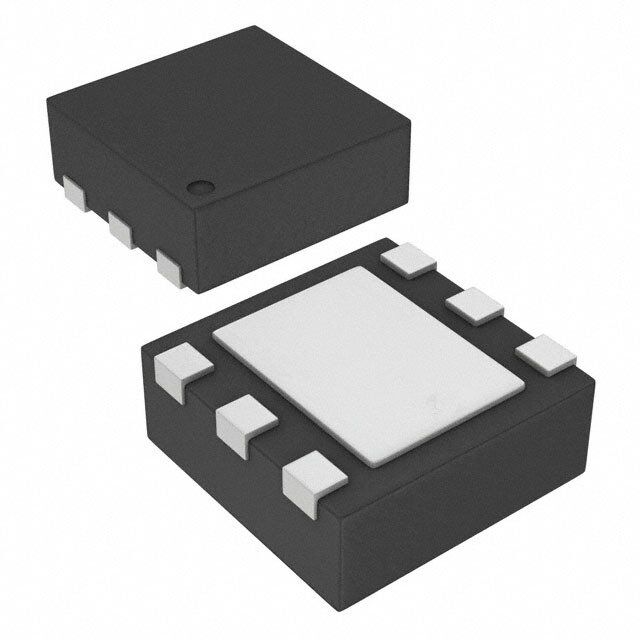
 Datasheet下载
Datasheet下载
